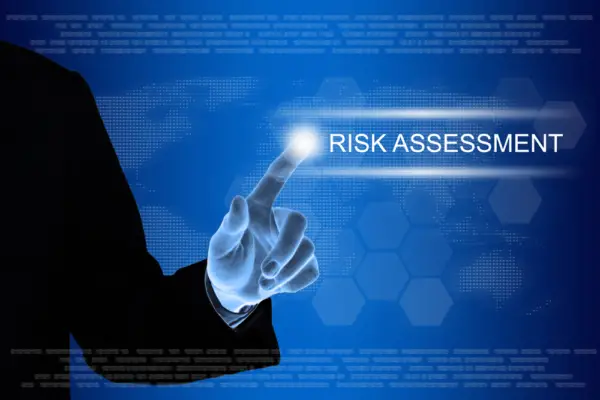Risk assessment in financial audits aims to identify and evaluate potential risks that could impact the accuracy and reliability of financial statements.
It systematically analyzes various factors, such as internal controls, inherent risks, and external influences, to determine the level of risk associated with specific financial transactions or activities.
The primary objective of risk assessment is to enable auditors to prioritize their audit procedures based on the assessed level of risk.
Auditors can concentrate their efforts on carrying out comprehensive testing and verification procedures by pinpointing regions with a greater probability of material misstatements.
This helps ensure that financial statements are presented fairly and provide users with reliable information for decision-making purposes.
Effective risk assessment enhances financial audits’ overall quality and credibility by providing assurance and confidence in the integrity of reported financial information.

Importance of Risk Assessment in Financial Audits
The significance of risk assessment in financial audits lies in its ability to identify potential areas of vulnerability and uncertainty within an organization’s financial statements, thereby ensuring the accuracy and reliability of the auditing process.
Risk assessment techniques are crucial in evaluating the likelihood and impact of risks associated with financial reporting, allowing auditors to focus their efforts on high-risk areas.
Through a systematic risk assessment process, auditors can obtain pertinent information about an entity’s internal controls, inherent risks, and external factors that could potentially impact the financial statements.
This enables them to assess the organization’s overall risk profile and determine appropriate audit procedures.
Furthermore, risk assessment helps auditors prioritize their audit work based on identified risks, allocating resources efficiently and effectively.
To enhance the standard of audits, it is paramount to carry out risk assessments. This necessitates utilizing a systematic technique to recognize and tackle any plausible hazards that could exist in a company’s financial records.
Key Components of Risk Assessment
One crucial aspect to consider in evaluating potential dangers within a financial examination is the identification and analysis of critical elements.
The risk assessment process involves systematically identifying and evaluating risks that may impact the reliability of financial statements. This process entails understanding the organization’s objectives, internal controls, and external factors that could influence financial performance.
Risk identification is a key component of this process as it involves identifying and documenting risks relevant to the audit engagement.
Auditors can identify areas with a higher chance of material misstatement or fraud by analyzing different sources, including prior knowledge, industry trends, and discussions with management.
The objective is to assess the significance of these risks to determine appropriate audit procedures and allocate resources effectively during the financial audit.
Methodologies for Conducting Risk Assessment
Methodologies for conducting risk assessment involve employing systematic techniques to analyze and evaluate potential hazards, ensuring a comprehensive understanding of the underlying factors that may impact the reliability of financial information.
These methodologies aim to identify and assess risks that could lead to material misstatements in financial statements.
Various risk assessment techniques are commonly utilized in financial audits, such as:
- Interviews with management and key personnel.
- Review of internal control systems.
- Analysis of historical data and industry trends.
- Consideration of external factors like economic conditions or regulatory changes.
Additionally, auditors may employ statistical sampling methods to select relevant samples for testing.
Through the use of specific methodologies and techniques, auditors can obtain useful information regarding the potential risks that an organization might encounter.
This information can then be utilized to make informed decisions on how to best handle those risks during the audit process.
Role of Risk Assessment in Providing Assurance and Confidence
Risk assessment is crucial for decision-making as it helps auditors identify areas with a higher likelihood of material misstatement or fraud. Through risk assessment, auditors can efficiently allocate resources and prioritize audit procedures accordingly.
Additionally, risk assessment enables auditors to tailor their approach to address specific risks, enhancing the overall effectiveness of the audit process.
However, conducting risk assessments poses certain challenges. One challenge is the subjective nature of assessing risks, as different auditors may have varying perceptions and judgments.
Furthermore, obtaining reliable information about internal controls and management’s integrity can be difficult, particularly in complex organizations or when dealing with fraudulent activities.
Moreover, identifying emerging risks can be challenging due to rapidly changing business environments.
Despite these challenges, risk assessment remains an essential tool for auditors in ensuring the accuracy and credibility of financial information and providing stakeholders with confidence in the reliability of reported results.

Benefits of Effective Risk Assessment
Effective risk assessment gives organizations valuable insights into potential hazards and underlying factors, ultimately enabling informed decision-making and enhancing overall operational resilience.
One of the key benefits of effective risk assessment is the ability to conduct a cost-benefit analysis.
Organizations can assess potential costs by identifying and evaluating risks. They can then determine if implementing risk mitigation strategies would be cost-effective.
This allows organizations to prioritize resources and focus on addressing high-impact risks while minimizing unnecessary expenses.
Additionally, effective risk assessment enables organizations to develop robust risk mitigation strategies. Organizations can effectively address risks by tailoring their mitigation efforts to specific vulnerabilities they face.
This targeted approach enhances the organization’s ability to prevent or minimize the impact of potential hazards, ensuring its long-term sustainability and success.
Frequently Asked Questions
What are the potential consequences of not conducting risk assessments in financial audits?
Not conducting risk assessments in financial audits can have negative consequences, such as an increased likelihood of financial losses. Without identifying and evaluating risks, auditors may overlook potential errors or fraudulent activities that could result in significant financial harm.
What are the common challenges faced by auditors during the risk assessment process?
Common challenges auditors face during the risk assessment process include obtaining sufficient and appropriate audit evidence and identifying and assessing risks accurately.
Addressing inherent bias in judgment, dealing with complex financial transactions, and keeping up with evolving regulations and industry practices.
How does risk assessment help auditors in identifying and prioritizing audit areas?
Risk assessment aids auditors in identifying and prioritizing audit areas by facilitating collaboration among auditors and stakeholders, enabling a comprehensive understanding of potential risks, and guiding the development of risk mitigation strategies.
Are there any regulatory requirements or standards that guide the risk assessment process in financial audits?
Regulatory requirements are vital in guiding the risk assessment process in financial audits.
These requirements provide auditors with a framework to follow, ensuring the risk assessment is conducted systematically and effectively within established standards and guidelines.
How can auditors ensure the accuracy and reliability of the data used in risk assessment?
Auditors can ensure the accuracy and reliability of data used in risk assessment through data validation techniques, such as verifying the source and integrity of the data. Additionally, audit sampling can be used to select a representative sample for testing and verification purposes.

Conclusion
To sum up, conducting risk assessments during financial audits is essential in providing stakeholders with the assurance and confidence they need. By identifying potential risks and vulnerabilities, auditors can allocate resources more efficiently and plan their audit procedures for maximum effectiveness.
The key components of risk assessment include understanding the entity’s internal controls, assessing inherent risks, and evaluating control risks. Various methodologies such as interviews, analytical procedures, and observation, are employed to conduct risk assessments.
A well-executed risk assessment can improve the dependability of financial statements and add to the comprehensiveness and accuracy of an audit.

Chris Ekai is a Risk Management expert with over 10 years of experience in the field. He has a Master’s(MSc) degree in Risk Management from University of Portsmouth and is a CPA and Finance professional. He currently works as a Content Manager at Risk Publishing, writing about Enterprise Risk Management, Business Continuity Management and Project Management.

